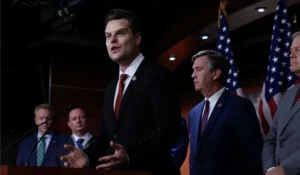United Automobile Workers’ Strike on General Motors

In today’s society, gasoline cars of old are slowly being replaced by SUVs, pickups, hybrids and electric cars. General Motors (GM), the largest domestic automaker, plans on closing factories which will affect the lives of thousands of workers, due to the shifts in consumer tastes. There is an increasing popularity in SUVs and pickup trucks, due to their height, bigger size, convenience and practicality, and a decline in sedans, many of which are produced in North America, benefiting GM to reduce spending on sedans, which have smaller profit margins, to invest in more popular and more eco-friendly cars.
Since September 15th, 2019, the United Automobile Workers (UAW) started striking to reopen idled plants, maintain job benefits, and reduce the use of temporary workers. The idle and closing plants put the jobs of many veteran workers at risk.
Very little has been disclosed about the tentative agreement that the UAW and GM have reached today. What is known is that workers will keep their health insurance, GM will invest $9 billion in North American plants, and most union members would be paid an $11,000 ratification bonus with temporary workers getting a $4,500 bonus and an easier process of becoming a permanent worker. Lastly, workers will be able to reach the top pay of $32 an hour in four years and many workers will be able to get lump-sum bonuses (3-4% of wages).
The strike going on has affected GM’s ability to deliver cars. The production of the long awaited mid-engined Corvette and highly-profitable SUVs and pickups are being delayed because of the strike. This led to a slight drop in GM’s profits and stock prices, which likely made GM offer a temporary labor contract.
This strike and the automobile workers have also become a political issue. One of President Trump’s rallying points was to keep jobs in America and take measures to prevent outsourcing. This led to his popularity in the Midwest and Rust Belt regions. In 2020, these workers may become an issue that potential candidates need to address to gain influence in the area.








